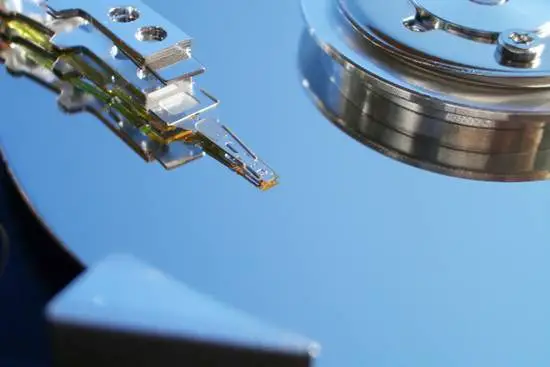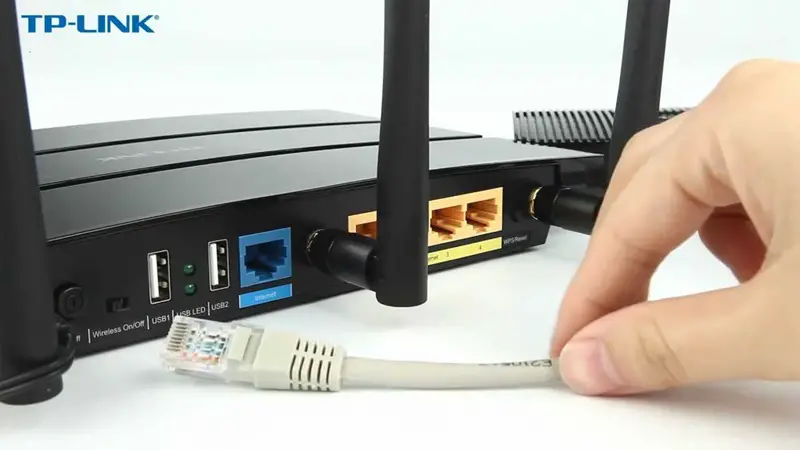Among the wide range of components that go into the average home computer, your Hard Disk Drive is surely the part that is most likely to stick around. Whereas motherboards, processors and RAM sticks become outdated and graphics cards just plain stop working because of stress, your old HDDs can stay functional and useful for years to come, no matter how small capacity or slow they are. So if you find yourself with spare HDDs having ditched the machines they came with, you might be looking for ideas of what to do with them: hence, the following article.
1. Upgrade your Playstation 3
One of the biggest leaps made in video game console technology has been the addition of hard drives. And one of the strangest characteristics about this generation of technology is how long it has been around – we’d usually expect to have seen the Playstation 4 and X-Box successor about two years ago. This means that if you have an early Playstation 3, you probably have a tiny hard disk drive size – anywhere between 40GB to 80GB. In fact, this Christmas’ new Playstation 3 models include a budget-minded 12GB model – barely enough to stick your saved games on.
[Read also: How Big Do You Think Hard Drives Can Go?]
Even users with later models that feature hundreds of gigabytes of storage could benefit from a Playstation 3 Hard Drive upgrade, by installing a Solid State Drive to enjoy faster loading and installation times across the board. So long as you have any 9.5mm high, 2.5 inch SATA laptop hard drives, you can replace the Playstation 3’s hard drive easily. Sony even details how to do it in you user manual, and it’s incredibly easy to do. First, remove a small plastic cover (on the old PS3 this is on the bottom edge. On the ‘slim’ it’s on the bottom right of the front face.) Remove the old drive from the slide-out tray, replace with the new drive and simply slide it back into the console. Easy.
2. Turn your internal hard disk external
Considering that external hard disk drives are often just capable internal drives dressed in USB-connected cases, it’s not surprising that your unused internal drives have futures as a means of external storage. Docks and enclosures are affordable and transform internal SATA drives into easy to transport, portable drives. Docks particularly offer hot-swappable functionality, allowing you to pop drives in and out without turning the power off – particularly useful if you have a large number of old drives (and a poor cataloguing system).
[Read also: Why an External Hard Drive is Important to You]
3. Create an off-site backup
It’s common sense to have as many backups as possible, so we won’t pretend that you haven’t already thought of using an old drive (or getting a new drive) for this purpose. However, the vast majority of users don’t really think too hard about what they then do with the drive once they’ve created the backup. An internal drive will be left in the machine, allowing for regular backup scheduling: but what if someone pours water on the machine and you lose all your drives at once? An external drive may enter general use as a drive to take from work to home, but what if either of your machines are attacked by a virus? And without meaning to be over-dramatic, what if your entire house burns down with all of your backups in it?
Identify your most important files, whack them on an old internal or external drive and find somewhere away from your home to keep them. Rent a safe deposit box, or just tell your parents to store your drive in a safe place. Heck, fill it with your family photos and bury it in the garden in a sturdy metal box that shouldn’t be opened until the year 2072 – just don’t keep it around the house.
4. Create your own cloud
Cloud storage is actually a rather old idea, if you think about it, and if we’re talking about off-site storage, it stands to reason that any old drive can be integrated into a personal cloud server (giving the likes of Google and Apple fewer ways to access your data). Stretching the definition of “Cloud computing”, you could simply have an extra computer on your home network full of files that you want to be accessible from any other machine. However, there is plenty of software out there for creating a machine that is accessible remotely – try Tonido, ownCloud or OxygenCloud.
[Read also: How to Select the Best Free Online Storage Service]
5. Use it as a scratch disk
No, we’re not talking about literally scratching the disk (unless you have data you want to be permanently rid of, and then we’d recommend a sledgehammer). Neither are we talking about turntablist techniques in the style of Grandmaster Flash. “Scratch Space” in computing terms is hard disk space into which data is swapped when RAM is full – a situation that is very common when working with humungous files in certain programmes. By putting “Scratch Space” on a specific “Scratch Disk”, you gain a considerable performance boost, especially if it’s big and empty (as it won’t be tied up with accessing any other data).
Whilst simply having more RAM would be more efficient, we’re willing to bet that you have some fast but superseded drives around that would be ideal for this purpose – It’s probably not worth turning over your shiny new 3TB hard disk drive for this purpose, but if you’ve just acquired such a device, perhaps your old drive can be relegated to the scratch disk role.
Typical programmes that benefit (and allow you to specify) scratch space include: Photoshop, Final Cut Pro and any other image and video programmes that work with files that are hundreds (possibly thousands) of megabytes in size. Windows itself works with a page file, which can be configured to be placed on the drive in the same way.





I’m not a huge fan of Playstation or Xbox games. Actually, when I have some spare time, I usually read blogs and update mine. So, I guess turning my internal hard disk into a portable one, it’s the best solution in my case. 🙂
Something I omitted from the article – if you use a games console for primarily as a way of watching downloaded media, you’re probably better off re-appropriating an internal drive as an external one anyway. Means you can use it anywhere as well as your console. Mind you, I’m not sure if it’s the case with the 360, but you will need to use the FAT32 file-table if you want the external drive to be read by the PS3 (something that introduces irritating problems – FAT32 cannot cope with files over 4GB in size).
Well, Steph I can tell you only one thing: God bless my brother who knows these tech details. After reading your article (and since I had an extra hard drive), I asked him to “translate” your comment and help me put into effect my plan. Unfortunately, he’s free only next Sunday.
Haha, yes File tables are one of those details that sound obscure, but actually they’re in a simple enough place – they’re just a drop-down option when you format (wipe) the drive. Most are set to “NTFS”, and rightly so.
The first result in google for “format drive in windows” should tell you everything you need to know 🙂
You took the word out of my mouth Steph! I am going to replace my hard drive and I was just thinking of using my old one as external hard drive or as a backup. And you mentioned both of them here…
The other uses are also very nice indeed. So a nice post indeed Steph.
At least there’s one part of a computer that doesn’t have to get donated or recycled! In fact, I probably ought to remind anyone who works with sensitive data that they shouldn’t just give their old drives away or dispose of their ‘dead’ ones casually – it’s apparently quite easy to take an apparently dead HDD and read data off of it, even if it has been formatted before disposal…
It is a great idea to replace Playstation 3 disk with old pc disk. My computer is getting slower due to I/O issues. I am going to order new disk for pc and use the old disk for PS3. Thank you for sharing this.
Remember to check that it’s a 9.5mm high disk! Plenty of 2.5 inch drives are taller unfortunately…
Hi Steph,
The best things about hard drives is that they don’t get busted so easily which is why even if you change computer units, you can still salvage your old hard drive and use it as a sort of backup. The problem with old hard drives though is that they have very little capacity as compared to newer ones which is why it is sometimes hard to know where you stored certain files, especially if you have more than three spare hard drives. I currently have eight usable hard drives with 8, 20, 40 and 80 GB capacity. I also have busted hard drives which I have dissected. I used the platters as coffee coasters and the magnets as keychains.
I’m overstepping my knowledge, but I believe that one thing you could do with all those small extra drives would be to operate them in a “RAID” (Redundant Array of Independent Disks). The basic idea as I understand it is to have all the drives treated as a single drive, with files being written partially to each disk. The more drives you have, the faster things are placed on them (there are a bunch of other modes – like automatic duplication. Also, apparently this is difficult with non SATA drives from different manufacturers).
Plenty of good resources on that with a google search for “setting up RAID”, but again, have to say it’s not something I’ve tried!
Hi Steph,
I’ve heard about this RAID thing before but it has never really occurred to me about setting one. Nevertheless, thanks to the idea you pointed out, I think I may try this one out. Fortunately for me, windows 7 provides RAID without any special hardware needed… yep, I’m in the process of researching on how to set up RAID at the moment.
Hi,
I am in mid seventies, but need help with choosing an ext. HD for my Acer laptop, a nice neat one which I will attach to the lid of the laptop via velcro, for convenience. I had thought of buying a Samsung 1 T.B. off Amazon for about 63 Euro or so, delivered to Ireland. Can it be divided up into separate named drives, say E, F, G, H? Will it work ok with Windows Vista Home Premium 32 bits, (not 64)? The laptop is working perfectly, if a bit slow., about 7 years old? I intend to use it for family photos which I have on Picasa. Is that the best free photo manager now available, suitable for a not very savvy old geyser like myself?Any pointers or guidance would be greatly appreciated,
Mike